FESTIVITIES OF VALENCIA
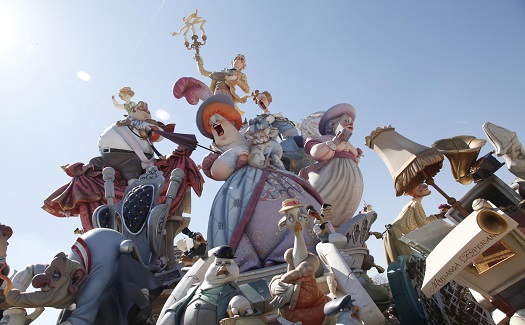
FALLAS FESTIVITY
With the arrival of spring, Valencia gets ready for its most famous festivity. Every March the fallas festivity takes place celebrating tradition, art and satire.
This festivity is considered to be of great importance both nationally and internationally. Its origins are related to the old guilds (medieval associations) of carpenters who used to burn up the waste and junk from their workshops in the eve of San José Day, their patron saint. This tradition changed with the time to the burning of the so-called fallas, big paperboard figures, at many places of the city.
A falla usually is made up of one main figure in the middle several metres tall surrounded by others of smaller sizes all held by a wooden framework. These beautiful figures are painted and include signs explaining their meaning, always being critical and satirical.
The artists and handcrafters work for months in the construction of this magnificent monuments that will be burned down on the 19th of March during the so-called cremà (the burning).
Date: 15-19 March.
CORPUS CHRISTI FESTIVITY
The Corpus Christi festivity is cosnidered historically as the most traditional one in Valencia. It is celebrated 60 days after Easter Sunday and currently its celebration is beyond the religious meaning, showing the festive spirit of the Valencian people through all the symbolism.
Date: 60 days after Easter Sunday.
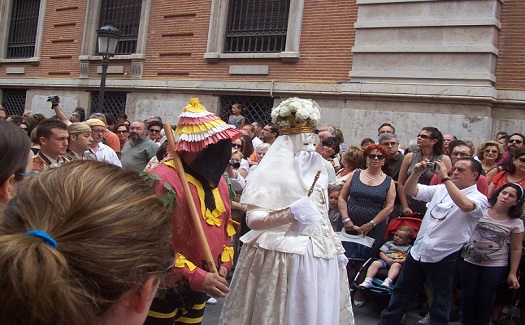
FAIR OF JULY
Since the 21 of July 1871, the Valencian people celebrate the fair of the city every year. The Fair of July was originally celebrated with a parade, exhibitions and products sale, but today it offers a varied agenda with many other activities, including the so-called Batalla de las Flores, Certamen Internacional de Bandas de Música de Valencia (International Contest of Valencia's Municipal Bands) and Festival Viveros for all ages.
Date: 27 June-27 July.
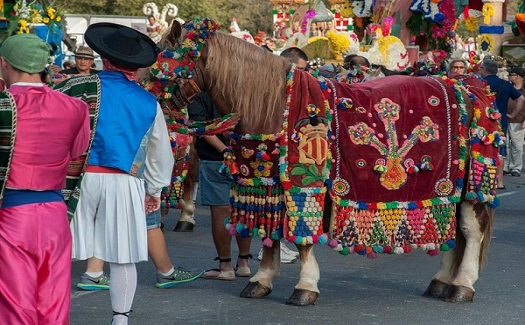
EASTER WEEK
The Easter Week of Valencia is traditionally related to its typical relationship with the sea, given that it was the fishers and the seamen who started this festivity.
One of the most representative features of this Easter Week is the fact that there are 18 saint images in total, from different fraternities or particular houses, that celebrate this week in a special way. These fraternities or houses host the saints images, making their houses real chapels open to the public during this week.
A remarkable event takes place in the Noche de Gloria (Night of Glory), in the early morning of Easter Sunday: the neighbours sprinkle water and throw dinnerware from their balconies; this act is known as trencà dels perols and symbolizes the expulsion of the old for the new to come.
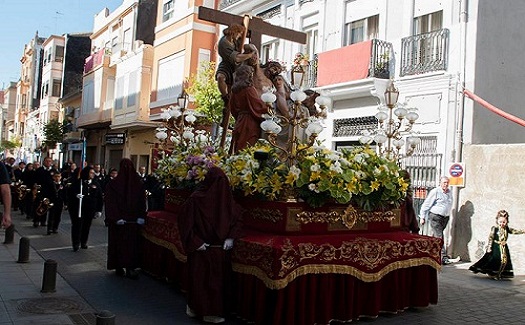
Date: 10-20 April.
9 OF OCTOBER FESTIVITY
On the 9th of October the Community of Valencia celebrates the date when Jaume I the Conqueror entered the city to free it from the Arabic control by Abul Djumayl Zayyan in 1238. This festivity has been celebrated since the first centenary of that event in 1338. During this day there is a parade of the senyera (the flag of Valencia) passing by the city hall, the cathedral and the park El Parterre, where there is a statue of Jaume I.
Since the 9th of October coincides with Sant Donís Day (San Dionisio), the Lovers' Day in Valencia, there is the tradition, known as mocadorà, in which the men give the women a scarf with four knots, and on each of its ends there are tied marzipan sweets as a sign of love.
Date: 9th of October.
VIRGEN DE LOS DESAMPARADOS FESTIVITY
The second Sunday of May the people of Valencia gather to celebrate this festivity honouring Virgen de los Desamparados, the patron saint of the city. The religious follow the tradition of making offerings and tributes to the Virgen, such as Missa de Descoberta, a mass held at 5am, or Missa d’Infants.
Every year, on the eve of this day there is concert of the Municipal Band of Valencia at Plaça de la Virgen, followed by fireworks and traditional dances.
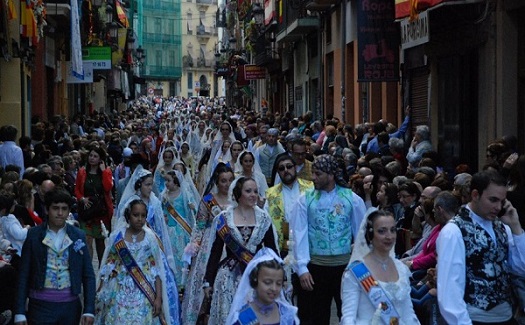
At 8am Missa d’Infants is held in the Basilica of Mare de Déu. After that, the Virgen's image is taken on a pilgrimage and then the famous mascletà, a noisy and rhythmic fireworks show, takes place. In the evening, the virgin's image is taken on a procession throughout the historical centre.
Date: Second Sunday of May.






